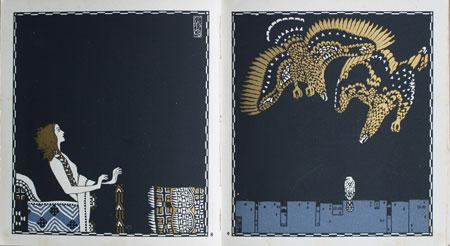Nineteenth-century Europe has a lot to answer for. They invented the chastity belt, they shaped our vision of the medieval world (think Tennyson), and they gave us the personification of "Opera"—a woman with long blond braids, a horned helmet, and a brass corset. The new exhibition at LACMA, Myths, Legends, and Cultural Renewal: Wagner's Sources, shows us that just as the Victorians reshaped the medieval world to their liking, Wagner picked, chose, and altered the stories of the old Niebelungen legend to create his four operas of The Ring Cycle.
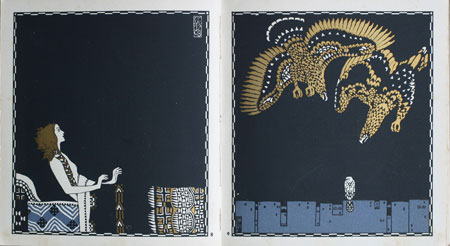
Carl Otto Czeschka, "Untitled (Dream of Falcons)," c. 1905, from the book "Die Nibelungen: dem deutschen Volke wiedererzählt (The Nibelungen legend: Retold to the German people)," Mr. and Mrs. Allan C. Balch Art Research Library
Exhibition curator Timothy Benson brings us some other striking interpretations of the Niebelunlied, including illustrations by Carl Otto Czeschka and the woodcuts of Franz Grohs, never before exhibited at LACMA. In a charming little book (LACMA’s copy once belonged to Kaiser Wilhelm II), Czeschka shows a young girl, Kriemhild, dreaming that her brothers, the eagles, will kill her lover, the falcon. Kriemhild is a major player in the original saga (whom Wagner would re-cast as Gutrune, just a nice girl looking for a husband).
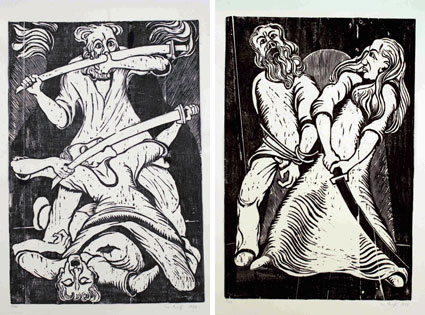
Left: Hans Grohs, "Der Bluttrank (The taste of blood)," 1920; right: Grohs, "Kriemheld Tötet Hagen (Kriemheld kills Hagen)," 1920, gifts of Prof. Annie-Paule Quinsac
Grohs shows Kriemhild, many years later, leading the fight between her people, the Huns, and her guests, the Burgundians. Then she kills Hagen, who with her brothers had killed her lover, Siegfried. She kills him because he will not tell her where he hid a golden treasure (spoiler: he threw it in the Rhine). Wagner took this sprawling saga and reshaped it to bring out a morality play carried out through the four operas Rhinegold, Die Walküre, and Siegfried, culminating in the decline and fall of the gods, Götterdämmerung. In another transformation, Achim Freyer has created twenty-first-century avatars of the legendary characters for the LA Opera production of The Ring Cycle. One definition of "avatar" is "a new personification of a familiar idea." In that sense, Freyer has given James Cameron a run for his money.
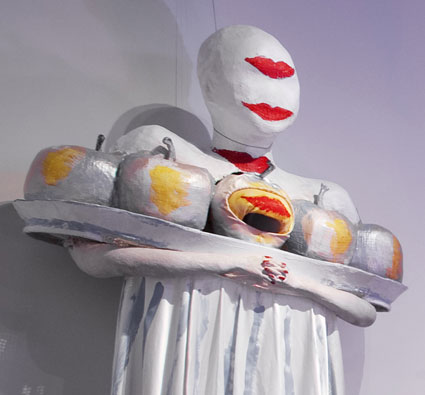
Achim Freyer, "Freia," courtesy of the Los Angeles Opera
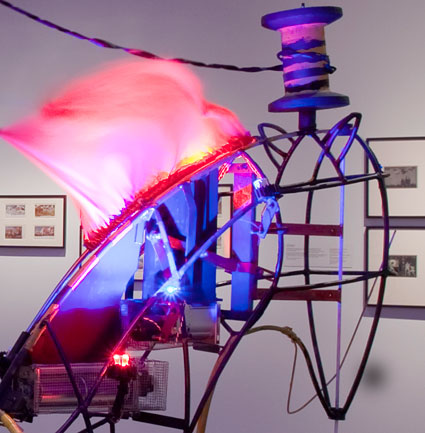
Achim Freyer, "Walkurenritt (The ride of the Walkyries)," 2009, courtesy of the Los Angeles Opera
After seeing the operas from the balcony, it is exciting to see Freyer's version of a Valkyrie's horse up close in LACMA’s gallery, and to get a good look at Freia with her golden apples of immortality. And believe me, twenty-first-century Brünhilde has left her corsets far behind, along with that funny hat, to say nothing of her new ’do!
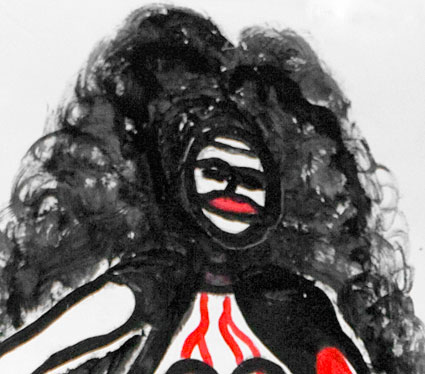
Achim Freyer, "Brünhilde sterblich (Mortal Brünhilde)," courtesy of the Los Angeles Opera
Karen Palmer, Curatorial Administrator



